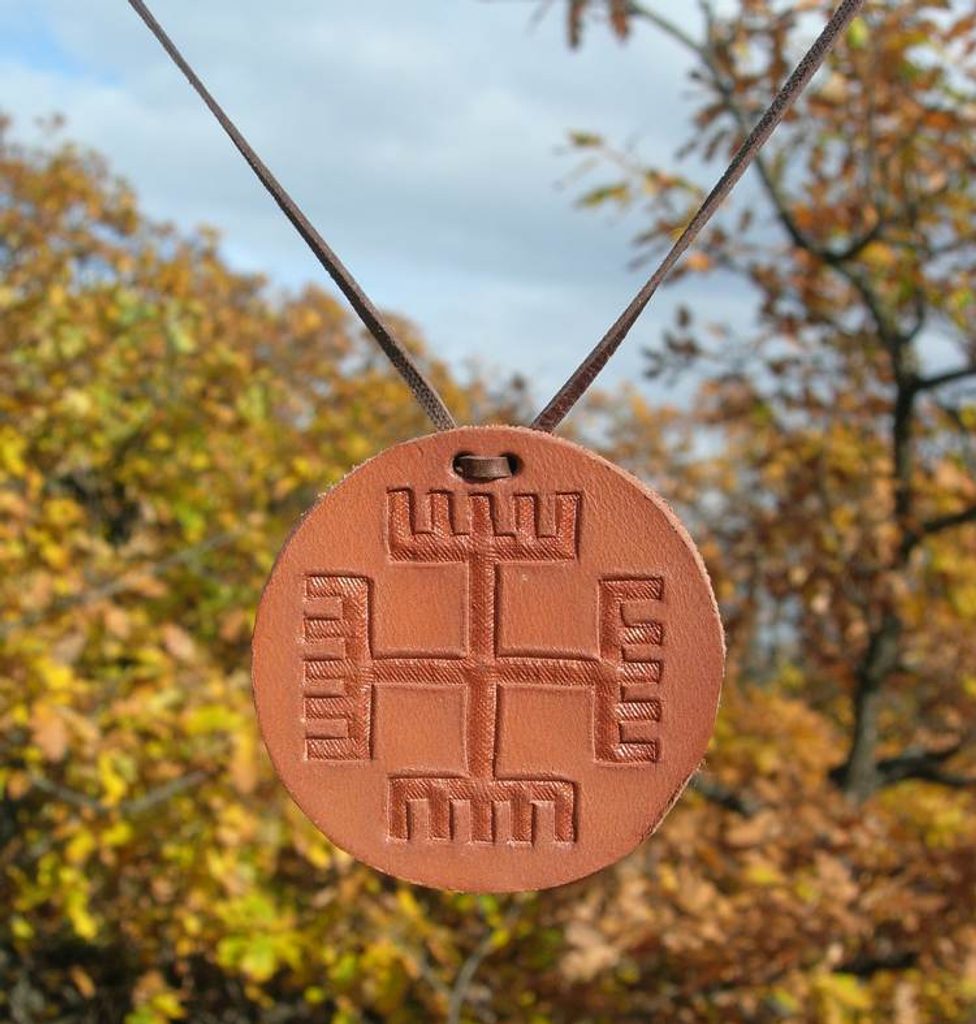Introduction
This text contains only basic information about slavic native traditions. If you want to learn more - read some books, or go to links that I recommend you (look at the end of this article).
Historical Background
First of all, it must be written that slavic religion is not so well known as e.g. german (id est scandinavian) or celtic. It's because of poor sources. There is no written texts like scandinavians sagas or celtic legends and poems - slavic christian elites had no interest in survival of their native traditions. They were going to erase it from history's charts instead. I suppose it is bounded with resistance, which gave lower classes. In many slavonic countries (e.g. Poland in 1034, Czech Kingdom in the beggining of Xth century) there occured something called "the pagan reaction". It was a revolt of lower, still pagan classes, against the oppresion of Church and nobleman. During this events, the paganism was again main religion for a short period of time. It must be obvious than victorious christian people wanted to erase momories about paganism - because it was a root of resistance against tyranny and feudalism (which was half-slavery system in reality).
Our sources than are: archeology, folklore, some fragments from foreigner's texts, linguistics and of course comparitive mythology. By it, we can rebuilt slavic's ancient traditions.
Main Gods
Perun - He was also called with other names, dependly of region, and was widely worshipped in whole slavonic land. For many, he is the most important god of the pantheon.
He is describing as a bearded, strong men with an axe or hammer in his hand.
His name means "he, who strikes". As the god of sky and storm he represents an element of order. He is an active deity, in legends fighting with chaotic forces (e.g. he fights with a Dragon (Żmij), who represent a chaos in the universe). He is also responsible for the creation of the universe, along with Veles.
He is an incarnation of courage, honor and striving for perfection. He was worshipped especially by warriors.
He is similar with other thunder gods, like Thor and Taranis.
He's holy tree is oak.
He's holyday is 20 of July.
Veles - a chtonic, god of underworld (Navia), wealth, magic, poetry and knowledge. A deity that represents a chaotic side of the universe. He's the secend most important god in slavic pantheon, right behind Perun. He is his antagonist, (e.g. myth about creation of the universe). Together with Perun, he created a man.
Animals bounded with Veles are viper, bull and black horse.
He is similar to Hades and Pluto.
Svarog - a solar god, patron of celestial fire and of blacksmithing. He represents a more distant forces of light (deus otiosus), and by many he is called a demiurg. He is suppossed to be the main god of the pantheon, a king of all gods, not so interested in Earth's affairs though.
Similar to Hephaestus.
Dažbog - a son of Svarog, god of fire and a cultural hero. He represents a home's fireplace, and he gives people wealth and luck in life.
Similar to: Sol, Vesta and Hercules.
Mokosh - Mother Earth, goddes of fertility, abundance and love. Patron of women. One of the most important deities in slavic pantheon.
Similar to: Demeter, Aphrodite.
Rod - He is a patron of all human gatherings e.g. families, kins, nations etc. He also assigns everyone's fate with help of his three servants, Rožanicas. He is a distant god, but Rožanicas were often an object of worship, due to their power of changing people's destiny.
Yarilo/Yarovit - a young, active god of spring, light and youth. He is incarnation of goodness, fertility and hapiness, especially worshipped at the first days of spring. He dies in the time of winter, and reborn on spring.
Described as a young, blond men dressing white drob. He rides a horse, and holds an ear of grain in his hand.
He's main holyday is 20th of april.
Similar to: Baldur, Apollo.
Marena/Marzanna - a goddes of death and winter, connected with underworld (Navia). Her effigy is burned on the first day of spring.
Hors - a god of moon.
Other beings
Dola - personification of fate, similar to disir in scandinavian mythology or christian guardian angel. They protect people form all the evil.
Dziady (Forefathers) - a spirit of forebears, which can help in everyday life.
Regular festivals
21st of March - Jare Gody* - a festival of spring's equinox.
20th of April - Yarilo's Holyday.
21st of June - Kupala's Night - a festival of summer's solstice.
20th of July - Perun's Holyday.
23rd of September - Festival of yields - a festival of autamn's equinox.
1st of November - Dziady - festival of forefathers.
21st of December - Szczodre Gody - festival of winter's solstice.
*I'm using Polish names if there is no English one.
Learn more:
http://en.wikipedia.org/wiki/Slavic_mythology
http://www.paganspace.net/group/AncientSlavicMythology
http://www.britannica.com/EBchecked/topic/548484/Slavic-religion
http://www.academia.edu/1264171/Slavic_Religion
http://piereligion.org/slavic.html
Books:
Marija Gimbutas The Slavs
P.M. Barford - The Early Slavs: Culture & Society in Early Medieval Eastern Europe
J. Mahal - Slavic Mythology
A. Szyjewski - Slavic Religion
B. Ribakov - Ancient Slavic Paganism
Books for polish-speaking people:
A. Gieysztor - Mitologia Słowian
A. Szyjewski - Religia Słowian
S. Urbańczyk - Dawni Słowianie – wiara i kult
H. Łowmiański - Religia Słowian i Jej Upadek (very critical work, but you can find here some useful infos)
Vladyka, May 2013

No comments:
Post a Comment